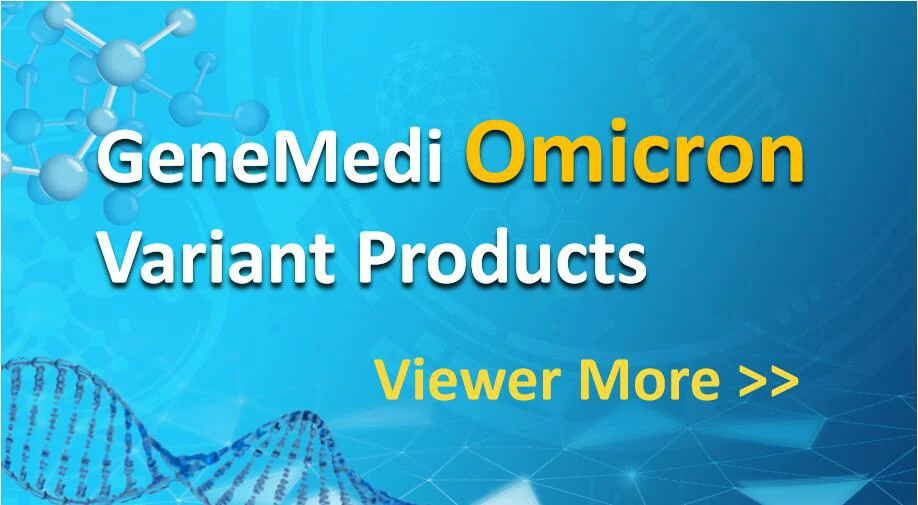AAV vector system (AAV expression system, AAV packaging plasmid system )
SOCAIL MEDIA

Introduction to AAV Vector System (AAV packaging and expression system)
GeneMedi’s AAV Vector System (AAV helper-free packaging system) including AAV expression vectors, AAV helper plasmid, and kinds of AAV Rep-Cap plamids (AAV-RC) with different serotypes of AAV capsids containing AAV2, AAV5, AAV6, AAV8, AAV9, AAV-PHP.B, AAV-PHP.eB, AAV PHP.s, AAV-retro, AAV-Anc80 (L65), AAV-DJ, AAV-DJ8, and some other specific AAV serotypes not mentioned.
Adeno associated virus (AAV) is one kind of human parvovirus. Recombinant AAV vectors can efficiently transfect various cell types, including dividing and quiescent cells, and induce persistent gene expression in vivo without integrating into host genome and causing any disease. These features make AAV an attractive candidate in the application of gene delivery for gene therapy and human disease model establishment. To date, AAV has been proved as the most excellent gene therapy vector. Over 204 clinical trials have been carried out using AAV vectors for gene delivery, and promising gene therapy outcomes have been achieved from clinical trials for a great number of diseases.
Genemedi has launched a comprehensive AAV production service. More than 12 AAV serotypes and a variety of capsid engineered AAV vectors are available for targeting different tissues and organs. The engineered AAV serotypes with modification of AAV capsids contain AAV PHP.B, AAV-PHP.eB, AAV PHP.s, AAV-retro, AAV-Anc80 (L65), AAV DJ, AAVDJ8, and some other specific AAV serotypes not mentioned.
An AAV Vector System including the AAV expression vector, AAV serotype plasmid and the AAV helper plasmid. In order to meet different organ infection needs, Genemedi provide more than 17 kinds of serotype plasmid as listed in Table 1, and also AAV expression vectors with different fluorescent labels (such as GFP, RFP, YFP and so on) and various promoters (such as CMV, CAG, syn, TBG and cTNT etc.) or peptide tags.
AAV(Adeno-Associated Virus) vector system
AAV vector system (AAV expression system, AAV packaging plasmid system)-Introduction
GeneMedi’s AAV Vector System, also named AAV expression system or AAV packaging plasmid system, is powerful tool for in-vivo gene delivery, gene editing and gene therapy. You can easily produce recombinant AAV (rAAV) paticle in 293T cell line in high titer using GeneMedi’s AAV Vector System. The Genemedi AAV vector system including multiple AAV expression vector plasmids, AAV helper plasmid and the serotypes-specific AAV Rep-Cap plamids.
GeneMedi’s AAV expression vectors have been inserted with differernt expression cassettes, containing kinds of verified protomters and reporters including GFP, zsgreen, RFP, mcherry and luciferase. The GeneMedi’s AAV expression vectors have been proved very suitalble for unique gene overexpression or shRNA-mediated knock-down (also called RNAi (RNA interference ). You can also achieve gene knock-out(KO) or gene editing using our Crispr-cas9-gRNA AAV expression vector.
The serotypes-specific AAV Rep-Cap plamid (AAV-RC plasmid, or called AAV-RC plasmid) contain the AAV2-Rep gene with different serotypes of AAV’s Cap gene(also called AAV capsids gene).
GeneMedi’s AAV Rep-Cap plasmids is including AAV2, AAV5, AAV6, AAV8, AAV9, AAV-PHP.B, AAV-PHP.eB, AAV PHP.s, AAV-Retro (Retrograde), AAV-Anc80 (L65), AAV-DJ, AAV-DJ8. GeneMedi also supplies capsid optimized AAV variant including AAV2 variant(Y444F), AAV2 variant (Y272F, Y444F, Y500F, Y730F), AAV2 variant (Y444F, Y730F, Y500F, Y272F, Y704F, Y252F), AAV2.7m8, AAV8-1m, AAV8-2m, AAV8-3m and some other engineering AAV serotypes not mentioned.
Note: Industry R&D excludes CRO&CDMO&CXO; Others includes CRO&CDMO&CXO&CMC&Manufacturing company
Cat.No | Expression | Name of Vectors | Promoter | Reporter | Cre-dependent | TAG (unfusion) | Price | Order |
|---|---|---|---|---|---|---|---|---|
Advantages
1. Safety. The wild type Adeno Associated Virus (AAV) has not currently been known to cause disease, and further security of recombinant AAV is ensured after removal of most AAV genome elements.
2. Low immunogenicity. AAV causes a very mild immune response, lending further support to its apparent lack of pathogenicity.
3. Broad range of host and specificity targeting. AAV has the ability to infect both dividing and quiescent cells, allowing genetic material to be delivered to a highly diverse range of cell types. More than 12 AAV serotypes and a variety of capsid engineered AAV vectors can be selected according to their tissue tropisms.
4. Long-term stable expression. Long term and stable expression of genes in vivo can be mediated by AAV.
5. Stable physical properties. AAV is still alive at 60℃ and resistant to chloroform.
Quality control description
AAV capsid contains VR1 82kDa, VR2 72kDa and VR3 62kDa, which can be detected using the method of polyacrylamide gel electrophoresis (PAGE) followed by silver staining or Coomassie blue staining. Pure AAV should display only three major protein bands, such as shown in Fig 3.

Reference
1.Li C, W Sun, C Gu, Z Yang, N Quan, J Yang, Z Shi, L Yu and H Ma. (2018). Targeting ALDH2 for Therapeutic Interventions in Chronic Pain-Related Myocardial Ischemic Susceptibility. Theranostics 8:1027-1041.
2.Yuan Y, Y Zheng, X Zhang, Y Chen, X Wu, J Wu, Z Shen, L Jiang, L Wang, W Yang, J Luo, Z Qin, W Hu and Z Chen. (2017). BNIP3L/NIX-mediated mitophagy protects against ischemic brain injury independent of PARK2. Autophagy 13:1754-1766.
3.Li S, X Dou, H Ning, Q Song, W Wei, X Zhang, C Shen, J Li, C Sun and Z Song. (2017). Sirtuin 3 acts as a negative regulator of autophagy dictating hepatocyte susceptibility to lipotoxicity. Hepatology 66:936-952.
4.Li L, B Li, M Li, C Niu, G Wang, T Li, E Krol, W Jin and JR Speakman. (2017). Brown adipocytes can display a mammary basal myoepithelial cell phenotype in vivo. Mol Metab 6:1198-1211.
5.Feng D, B Wang, L Wang, N Abraham, K Tao, L Huang, W Shi, Y Dong and Y Qu. (2017). Pre-ischemia melatonin treatment alleviated acute neuronal injury after ischemic stroke by inhibiting endoplasmic reticulum stress-dependent autophagy via PERK and IRE1 signalings. J Pineal Res 62.
6.Du X, H Hao, Y Yang, S Huang, C Wang, S Gigout, R Ramli, X Li, E Jaworska, I Edwards, J Deuchars, Y Yanagawa, J Qi, B Guan, DB Jaffe, H Zhang and N Gamper. (2017). Local GABAergic signaling within sensory ganglia controls peripheral nociceptive transmission. J Clin Invest 127:1741-1756.
7.Yang H, J Yang, W Xi, S Hao, B Luo, X He, L Zhu, H Lou, YQ Yu, F Xu, S Duan and H Wang. (2016). Laterodorsal tegmentum interneuron subtypes oppositely regulate olfactory cue-induced innate fear. Nat Neurosci 19:283-9.
8.Wu X, X Wu, Y Ma, F Shao, Y Tan, T Tan, L Gu, Y Zhou, B Sun, Y Sun, X Wu and Q Xu. (2016). CUG-binding protein 1 regulates HSC activation and liver fibrogenesis. Nat Commun 7:13498.
9.Wei Y, Y Chen, Y Qiu, H Zhao, G Liu, Y Zhang, Q Meng, G Wu, Y Chen, X Cai, H Wang, H Ying, B Zhou, M Liu, D Li and Q Ding. (2016). Prevention of Muscle Wasting by CRISPR/Cas9-mediated Disruption of Myostatin In vivo. Mol Ther 24:1889-1891.
10.Zhang X, Y Yuan, L Jiang, J Zhang, J Gao, Z Shen, Y Zheng, T Deng, H Yan, W Li, WW Hou, J Lu, Y Shen, H Dai, WW Hu, Z Zhang and Z Chen. (2014). Endoplasmic reticulum stress induced by tunicamycin and thapsigargin protects against transient ischemic brain injury: Involvement of PARK2-dependent mitophagy. Autophagy 10:1801-13.





